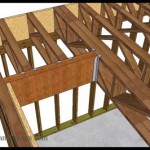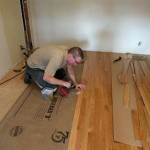Moisture Resistant Laminate Flooring For Basements: A Comprehensive Guide
Basements present unique challenges when it comes to flooring. Unlike upper levels of a home, basements are often susceptible to moisture intrusion, whether from groundwater seepage, humidity, or plumbing leaks. Selecting an appropriate flooring solution requires careful consideration of these potential issues. Moisture-resistant laminate flooring has emerged as a popular option for basement applications, offering a balance of aesthetics, durability, and ease of installation at a competitive price point.
Understanding the specific properties of moisture-resistant laminate flooring is crucial to making an informed decision. While the term "moisture-resistant" is used, it's important to distinguish it from "waterproof." Moisture-resistant laminate flooring is designed to withstand limited exposure to moisture, preventing immediate damage and warping. However, prolonged or excessive water exposure can still lead to problems. Therefore, proper installation and preventative measures are essential to maximize the lifespan and performance of this type of flooring in a basement environment.
This article will delve into the intricacies of moisture-resistant laminate flooring for basements, exploring its construction, advantages, limitations, installation best practices, and maintenance requirements. It will also address factors to consider when selecting the right type of moisture-resistant laminate for your specific basement conditions.
Key Point 1: Understanding the Construction and Materials of Moisture-Resistant Laminate
Laminate flooring, in general, consists of several layers fused together under high pressure. The composition of these layers dictates the flooring's overall durability and its ability to resist moisture. Understanding these components is critical when evaluating different moisture-resistant laminate options.
The typical layers of moisture-resistant laminate flooring are as follows:
*Wear Layer:
This is the top surface layer that protects the floor from scratches, stains, and fading. It's typically made from a durable melamine resin. The thickness and quality of the wear layer significantly impact the flooring's lifespan and resistance to wear and tear. *Decorative Layer:
Beneath the wear layer is a photographic image that provides the aesthetic appeal of the flooring, mimicking the look of hardwood, tile, or stone. High-resolution printing technology allows for realistic and varied designs. *Core Layer:
This is the heart of the laminate flooring and is responsible for its structural integrity and moisture resistance. In moisture-resistant laminate, the core is typically made from high-density fiberboard (HDF) treated with water-repellent additives. Some premium options may utilize a waterproof core material, offering superior protection against moisture intrusion. *Backing Layer:
The bottom layer provides stability and helps to prevent moisture from penetrating the flooring from underneath. It often consists of a melamine backing or a similar moisture-resistant material.The key difference between standard laminate flooring and moisture-resistant laminate lies primarily in the composition and treatment of the core layer. High-density fiberboard (HDF) is denser and more resistant to moisture absorption than medium-density fiberboard (MDF), which is often used in standard laminate. The water-repellent additives infused into the HDF core further enhance its ability to withstand moisture. However, it's crucial to remember that even with these enhancements, the core is not entirely waterproof.
When selecting moisture-resistant laminate, it's important to inquire about the density and composition of the core layer, as well as the type and concentration of water-repellent additives used. Reputable manufacturers will provide detailed specifications regarding these aspects of the flooring.
Key Point 2: Advantages and Limitations of Moisture-Resistant Laminate in Basements
Moisture-resistant laminate flooring offers several advantages that make it a compelling choice for basement applications. However, it's also important to acknowledge its limitations to ensure it aligns with your specific needs and expectations.
Advantages:
*Cost-Effectiveness:
Compared to solid hardwood, engineered hardwood, or tile, moisture-resistant laminate is generally a more affordable option, making it accessible to a wider range of budgets. *Ease of Installation:
Many moisture-resistant laminate products feature a click-lock installation system, which allows for relatively easy and quick installation without the need for adhesives or specialized tools. This can translate to significant cost savings if you choose to install the flooring yourself. *Aesthetic Versatility:
Laminate flooring is available in a wide array of styles, colors, and patterns, mimicking the look of various natural materials like wood, stone, and tile. This allows you to achieve your desired aesthetic without the maintenance requirements or higher cost of those materials. *Durability and Scratch Resistance:
The tough wear layer of laminate flooring provides excellent protection against scratches, dents, and stains, making it suitable for high-traffic areas in the basement. *Easy Maintenance:
Laminate flooring is relatively easy to clean and maintain. Regular sweeping or vacuuming, along with occasional damp mopping, is typically sufficient to keep the floor looking its best. *Improved Moisture Resistance:
As the name suggests, moisture-resistant laminate is designed to withstand limited exposure to moisture, making it a more suitable option for basements compared to standard laminate flooring.Limitations:
*Not Waterproof:
While moisture-resistant laminate can withstand some moisture, it is not waterproof. Prolonged or excessive water exposure can cause swelling, warping, and delamination of the flooring. *Susceptibility to Mold and Mildew:
If moisture penetrates the core of the laminate flooring, it can create a breeding ground for mold and mildew, which can pose health risks and damage the flooring. *Sound Transmission:
Laminate flooring can sometimes be noisy, especially in larger spaces. Installing an underlayment can help to dampen sound and improve the overall acoustic performance of the floor. *Substrate Requirements:
Laminate flooring requires a smooth, level, and dry subfloor for proper installation. Uneven or damp subfloors can lead to problems with the flooring's performance and longevity. *Limited Repair Options:
If laminate flooring is damaged, repairing it can be challenging. In some cases, it may be necessary to replace individual planks or even the entire floor.It is critical to carefully assess the potential for moisture in your basement and weigh the advantages and limitations of moisture-resistant laminate before making a decision. If your basement is prone to frequent or significant water intrusion, a truly waterproof flooring option like tile or vinyl may be a better choice.
Key Point 3: Installation Best Practices and Preventative Measures
Proper installation is paramount to the performance and longevity of moisture-resistant laminate flooring in a basement environment. Following best practices and implementing preventative measures can significantly reduce the risk of moisture-related problems.
Installation Best Practices:
*Subfloor Preparation:
Ensure that the subfloor is clean, dry, level, and free of any debris. Repair any cracks or imperfections in the subfloor before starting the installation. If the subfloor is concrete, it's essential to test its moisture content using a moisture meter. Moisture levels should be within the manufacturer's recommended range. *Underlayment:
Install a high-quality underlayment beneath the laminate flooring. The underlayment provides cushioning, reduces sound transmission, and acts as a moisture barrier. Choose an underlayment specifically designed for use with laminate flooring and suitable for basement applications. Some underlayments have built-in moisture barriers. *Acclimation:
Allow the laminate flooring to acclimate to the basement environment for at least 48 to 72 hours before installation. This allows the flooring to adjust to the temperature and humidity levels, minimizing the risk of expansion or contraction after installation. *Expansion Gaps:
Leave adequate expansion gaps around the perimeter of the room and around any vertical obstructions, such as pipes or columns. These gaps allow the flooring to expand and contract without putting pressure on the walls or other structures. Follow the manufacturer's recommendations for the size of the expansion gaps. *Proper Locking Mechanism:
Ensure that the locking mechanism of the laminate planks is properly engaged during installation. A secure connection between planks is essential to prevent moisture from seeping between the seams. *Sealing:
Consider sealing the perimeter of the room with a waterproof sealant to prevent moisture from entering through the expansion gaps.Preventative Measures:
*Address Moisture Sources:
Identify and address any potential sources of moisture in the basement, such as leaky pipes, cracks in the foundation, or poor drainage around the house. *Install a Sump Pump:
If your basement is prone to groundwater seepage, consider installing a sump pump to remove excess water. *Ventilation:
Ensure adequate ventilation in the basement to reduce humidity levels. Use a dehumidifier if necessary. *Regular Inspections:
Regularly inspect the laminate flooring for any signs of moisture damage, such as swelling, warping, or discoloration. Address any issues promptly to prevent further damage. *Prompt Spill Cleanup:
Clean up spills immediately to prevent water from seeping into the seams of the laminate flooring. Use a dry cloth or mop to absorb the spill as quickly as possible. *Appropriate Cleaning Products:
Use cleaning products specifically designed for laminate flooring. Avoid using harsh chemicals or abrasive cleaners, as these can damage the wear layer.By following these installation best practices and implementing preventative measures, you can maximize the lifespan and performance of moisture-resistant laminate flooring in your basement and create a comfortable and functional living space.

What Are The Best Flooring For Basement In Homes

Laminate Flooring For Basements

What Kind Of Flooring Should I Use To Finish My Basement Ozburn Hessey

What Is The Best Flooring For Basements Get Pros And Cons

Best Basement Flooring Options Liquidators

5 Best Flooring Options For Basements Floors2day

Selecting The Best Basement Flooring Next Day Floors

Water Resistant Laminate Flooring Juniper Home Basement Remodeling

Why We Installed Select Surfaces Laminate Floors In Our Basement Jeweled Interiors

The Best Flooring Options For Your Basement America
Related Posts








